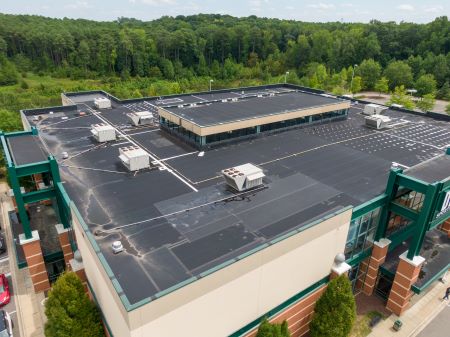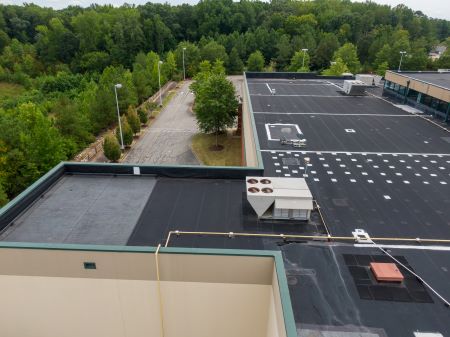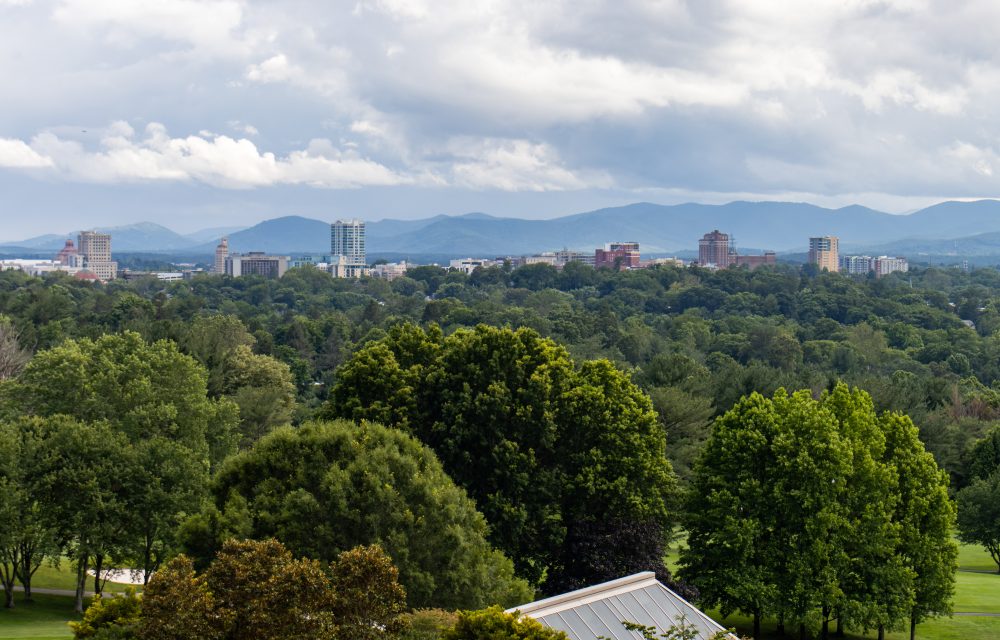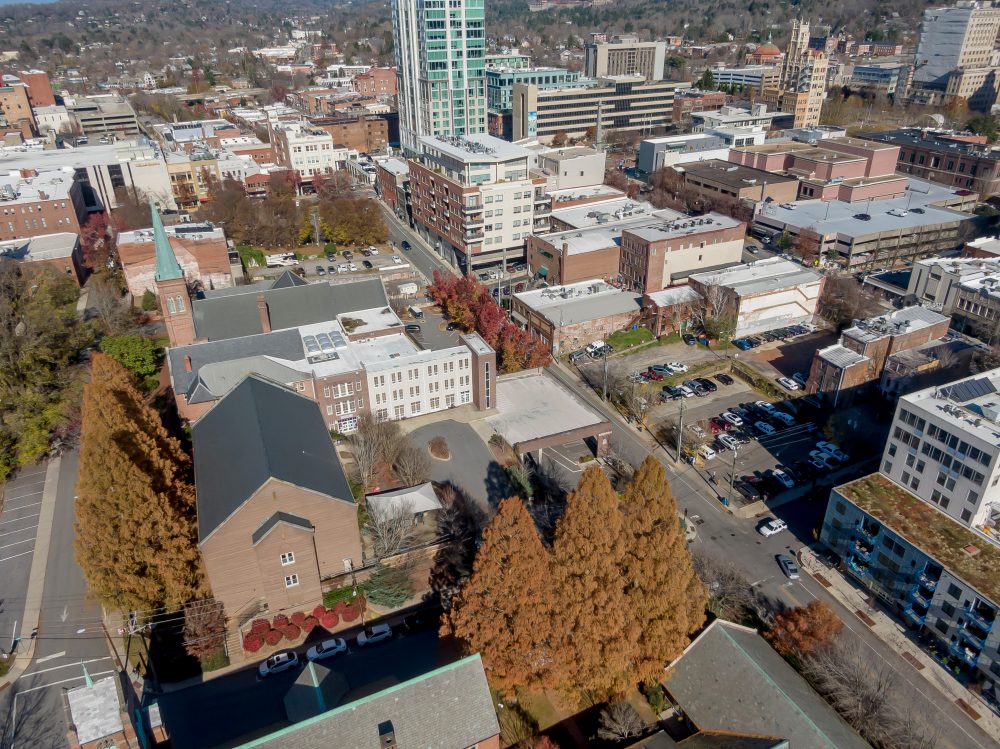Flat roofs have long been a favored choice for commercial buildings, and in recent times, they’ve been gaining popularity in residential constructions as well. While the term “flat” might suggest a completely level surface, these roofs typically have a slight pitch to facilitate water runoff. But, what materials are best suited for these roofs? Let’s delve into the primary types of flat roofing materials, touching upon aspects like installation techniques, costs, and the value of professional contractors in ensuring an efficient roofing system.
1. Built-Up Roofing (BUR):
Description: BUR is one of the oldest and most traditional methods for flat roofing. It is made up of alternating layers of bitumen (asphalt or coal tar) and reinforcing fabrics, creating a finished membrane.
How to Install a Flat Roof using BUR: The installation involves layering the bitumen and fabrics directly on the roof’s surface. The topmost layer is typically made of stone or gravel, which protects the underlying layers from UV radiation and physical damage.
Cost: BUR tends to be more labor-intensive than some modern alternatives, which can result in a higher flat roof installation cost. However, its durability can make it cost-effective in the long run.
2. Modified Bitumen Roofing:
Description: Modified bitumen is a successor to the BUR system, enhanced with modern roofing technology. It consists of a single-ply membrane made from bitumen mixed with modifiers, offering improved flexibility and strength.
How to Install a Flat Roof using Modified Bitumen: Modified bitumen can be applied using torch application methods, cold adhesives, or self-adhering sheets. The chosen method often depends on the specific product and the installer’s expertise.
Cost: The installation cost can vary based on the application method. Torch-down application tends to be the most cost-effective, while self-adhesive sheets might carry a higher cost.
3. EPDM Rubber Roofing:
Description: EPDM (ethylene propylene diene terpolymer) is a durable synthetic rubber roofing material. Its high resistance to weathering, ozone, UV radiation, and abrasions makes it a popular choice.
How to Install a Flat Roof using EPDM: The rubber membrane is rolled onto the roof substrate and attached using mechanical fasteners, adhesives, or ballasts. Seams are sealed using specially formulated tape or adhesive.
Cost: EPDM tends to be one of the more affordable flat roofing materials, offering both longevity and cost-effectiveness.
4. PVC Roofing:
Description: PVC (polyvinyl chloride) roofing is made from two layers of PVC material with polyester acting as a reinforcement layer between them. Known for its strength and durability, PVC is resistant to chemicals, fire, and water.
How to Install a Flat Roof using PVC: The PVC sheets are laid onto the roof and joined together using heat welding, which fuses the sheets together, creating a watertight bond.
Cost: While PVC roofing might carry a higher initial installation cost, its longevity and low maintenance needs can render it a cost-effective solution over time.
5. TPO Roofing:
Description: TPO (thermoplastic olefin) is a single-ply roofing membrane. It’s a popular choice due to its energy efficiency and environmentally friendly attributes.
How to Install a Flat Roof using TPO: Similar to PVC, TPO sheets are laid out on the roof and joined using heat welding. This method ensures seamless and watertight joints.
Cost: TPO tends to be competitively priced, often falling between the cost of EPDM and PVC, making it an appealing choice for many.
Why Hiring Flat Roofing Contractors is Essential:
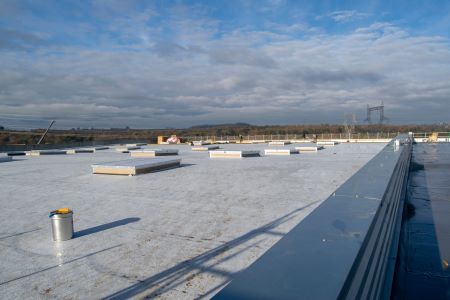
While some might be tempted to undertake a flat roof installation project independently, there are undeniable advantages to hiring professionals:
Expertise: Professionals bring a wealth of experience. This expertise ensures that the chosen material is suitable for the specific building and local climate.
Quality: A seasoned contractor is likely to deliver a higher standard of installation. This can result in a longer-lasting roof, fewer repairs, and overall better performance.
Cost Efficiency: Though you might pay more upfront for professional services, you can save considerably in the long run. Proper installation can mean fewer repairs and a longer lifespan for your roof.
Safety: Roof installation can be hazardous. Experienced contractors have the necessary safety equipment and knowledge to minimize risks.
If you’re pondering over a “flat roof installation near me“, it’s imperative to research and choose reputable flat roofing contractors. Their expertise can be invaluable, ensuring that you get the best return on your investment.
Conclusion:
Flat roofs offer a contemporary aesthetic and functional advantages, particularly in terms of space utilization. However, the key to an efficient flat roofing system lies in the careful selection of materials and proficient installation. Whether it’s the traditional charm of BUR or the modern appeal of TPO, each material comes with its unique attributes. Balancing factors like installation complexity, longevity, and cost can help in making an informed decision. While understanding “how to install a flat roof” can be beneficial, trusting the task of experienced contractors can ensure the longevity and efficiency of your flat roofing system.
- Commercial Roof Installation Tampa FL
- Flat Roof Repair Tampa FL
- Commercial Roof Maintenance Tampa FL
- Commercial Roofing Contractors Tampa FL
- Commercial Emergency Roof Service Tampa FL
- Commercial Roof Repair Tampa FL
- Roof Coating Company Tampa FL
- Flat Roof Replacement Tampa FL
- Metal Roofing Contractors Tampa FL
- Commercial Roof Replacement Tampa FL
- Flat Roof Installation Tampa FL
- Commercial Roof Installation Asheville NC
- Commercial Roof Installation Orlando FL
- Flat Roof Repair Orlando FL
- Commercial Roof Maintenance Orlando FL
- Commercial Roofing Contractors Orlando FL
- Commercial Emergency Roof Service Orlando FL
- Commercial Roof Repair Orlando FL
- Roof Coating Company Orlando FL
- Flat Roof Replacement Orlando FL
- Metal Roofing Contractors Orlando FL
- Commercial Roof Replacement Orlando FL
- Flat Roof Installation Orlando FL
- Flat Roof Repair Asheville NC
- Commercial Roof Maintenance Asheville NC
- Commercial Roofing Contractors Asheville NC
- Commercial Roof Installation Jacksonville FL
- Commercial Roofing Contractors Jacksonville FL
- Commercial Roofing Contractors Atlanta GA
- Commercial Roofing Contractors Mobile AL
- Commercial Roof Installation Atlanta GA
- Commercial Roof Installation Mobile AL
- Flat Roof Repair Jacksonville FL
- Flat Roof Repair Atlanta GA
- Flat Roof Repair Mobile AL
- Commercial Roof Maintenance Jacksonville FL
- Commercial Roof Maintenance Atlanta GA
- Commercial Roof Maintenance Mobile AL
- Commercial Emergency Roof Service Asheville NC
- Commercial Emergency Roof Service Jacksonville FL
- Commercial Emergency Roof Service Atlanta GA
- Commercial Emergency Roof Service Mobile AL
- Commercial Roof Repair Asheville NC
- Commercial Roof Repair Jacksonville FL
- Commercial Roof Repair Atlanta GA
- Commercial Roof Repair Mobile AL
- Roof Coating Company Asheville NC
- Roof Coating Company Jacksonville FL
- Roof Coating Company Atlanta GA
- Roof Coating Company Mobile AL
- Flat Roof Replacement Asheville NC
- Flat Roof Replacement Jacksonville FL
- Flat Roof Replacement Atlanta GA
- Flat Roof Replacement Mobile AL
- Metal Roofing Contractors Asheville NC
- Metal Roofing Contractors Jacksonville FL
- Metal Roofing Contractors Atlanta GA
- Metal Roofing Contractors Mobile AL
- Commercial Roof Replacement Asheville NC
- Commercial Roof Replacement Jacksonville FL
- Commercial Roof Replacement Atlanta GA
- Commercial Roof Replacement Mobile AL
- Flat Roof Installation Asheville NC
- Flat Roof Installation Jacksonville FL
- Flat Roof Installation Atlanta GA
- Flat Roof Installation Mobile AL
source https://naroofing.com/blog/what-are-the-main-types-of-flat-roofing-materials/
